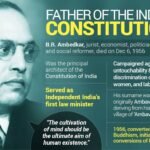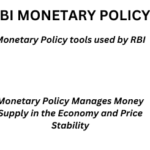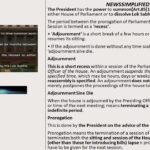Lok Sabha adjourned sine die: Dismisses sitting of Parliament

The Budget session of the 18th Lok Sabha was adjourned sine die.
LEARNING FROM HOME/ WITHOUT CLASSES/ BASICS
The summoning of Parliament is specified in Article 85 of the Constitution. This provision specified that the central legislature had to be summoned to meet at least once a year and that not more than 12 months could elapse between two sessions.
Article 87(1) of the Constitution provides:-
“At the commencement of the first session after each general election to the House of the People and at the commencement of the first session of each year the President shall address both Houses of Parliament assembled together and inform Parliament of the causes of its summons.”
The Indian Parliament comprises of the President and the two Houses-Lok Sabha(House of the People) and Rajya Sabha(Council of States).
The President has the power to summon(Art.85(1)) and prorogue(Art.85(2a)) either House of Parliament or to dissolve Lok Sabha(Art.85(2b)).
Adjournment
This is a short recess within a session of the Parliament, called by the Presiding Officer of the House. An adjournment suspends the work in a sitting for a specified time, which may be hours, days or weeks. In this case, the time of reassembly is specified. An adjournment does not bring to end a session. It merely postpones the proceedings of the house to a future time and date.
Adjourned Sine Die
“When the Presiding Officer adjourns the house without setting a date or time for the next meeting, it means terminating a session of Parliament indefinitely.
Prorogation
The President does this on the advice of the Council of Ministers.
Prorogation means the termination of a session of the House. Prorogation terminates both the sitting and session of the House.






0 Comments